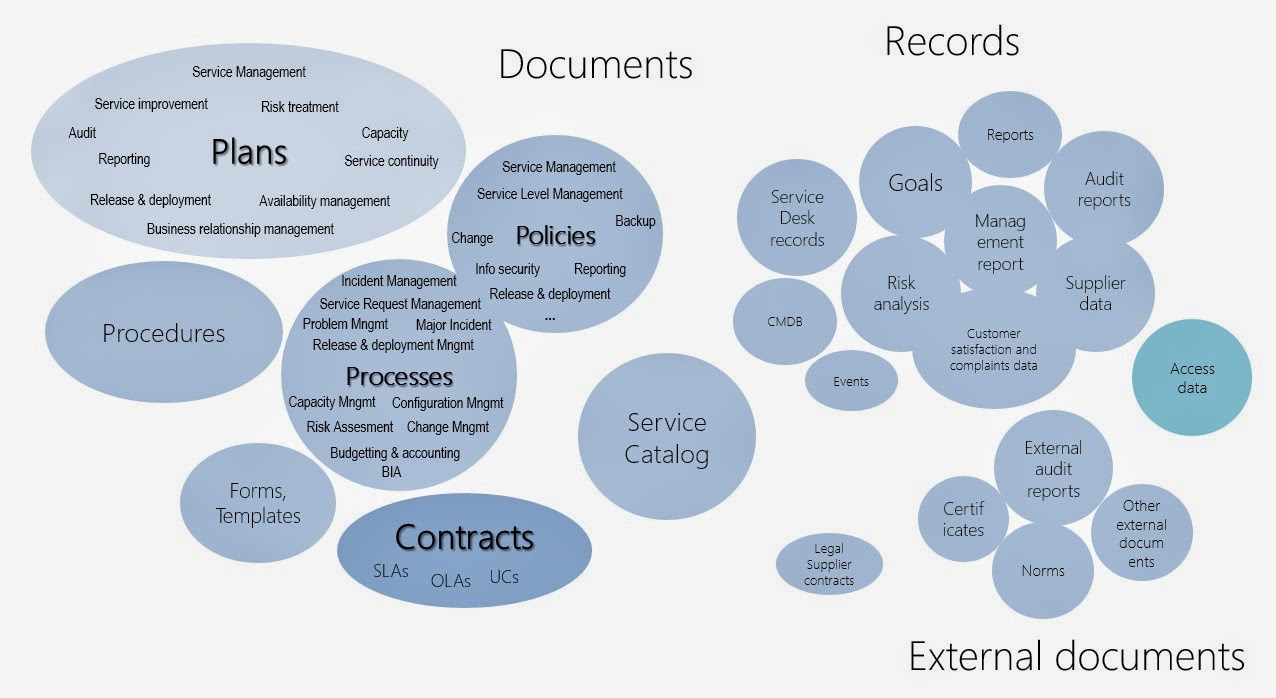Service delivery process group means business. Back in the old days, it was half of ITIL V2 Service Management. This is a large and complex process group oriented towards the customer. Service delivery processes create a lot of documents and records. Where will you keep them?
For additional info, please have a look at our previous posts:
- Service management document system
- Control process group documents
- Resolution process group documents
- Relationship process group documents
 |
| Service delivery process group documents |
6.1 Service level management
SLM is a key process in Service delivery, most of the other processes depend on it. There is a lot of communication with the customer during the process, and records should be retrievable either from the file system, specialized applications or document management system. All the changes on key documents should be done through the Change management process.
6.2 Service reporting
Reports are an important way of communication with the customer. Service provider has to keep records of all agreements about reporting with the customer. Optimal place to put report definitions would be the SLA, or a separate contract. For newly developed reports it would be enough to archive a customer's reply to your mail with the new report proposal.
All the reports have to be defined according to the requirements, so they can be delivered even if the main assignees are unavailable. Thing vacations, flu seasons… Keep the report definitions in a neat report catalog, and insist on standardized reports as much as possible. If the customer requires something specific, evaluate the requirement, and if it is found valuable, include it in your standard report.
6.3 Service continuity and availability management
This process requires a lot of activity and resulting records. The auditor will probably like to see most of them. C&A management is a difficult and tedious process since it doesn't provide immediate business results, but it provides proof that you are serious about your business.
6.4 Budgeting and accounting
Here is one process that most of the IT people tend to neglect. If it's true your case too, turn to your finance department and go through the requirements with them. They will most probably be able to help you pull it off.
6.5 Capacity management
Capacity management has some very simple requirements and it is rather straightforward. If you are a managed services provider, or if you provide IT services to external customers, try to document and archive your communication with the customer about the capacity, since you have to take into account their resources too. The auditor might want you to prove that you take care of things over the fence.
6.6 Information security
If you are implementing ISO/IEC 20000, there is a chance you alredy certified for ISO/IEC 27001. Good for you, since you can redirect most or all of this process requirement to your ISMS (Information security management system). If not, follow the requirements and take care of the produced documents and records similar to the other recommendations from this series of posts.
So, a bunch of complex processes. Don't be intimidated by them. Plan your implementation, one process at a time. In the beginning, it looks like a Mission impossible. After some time, you'll get used to it :)








